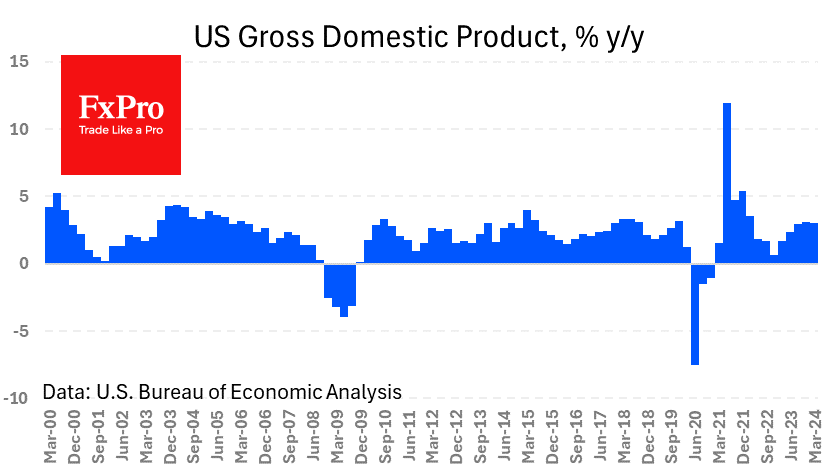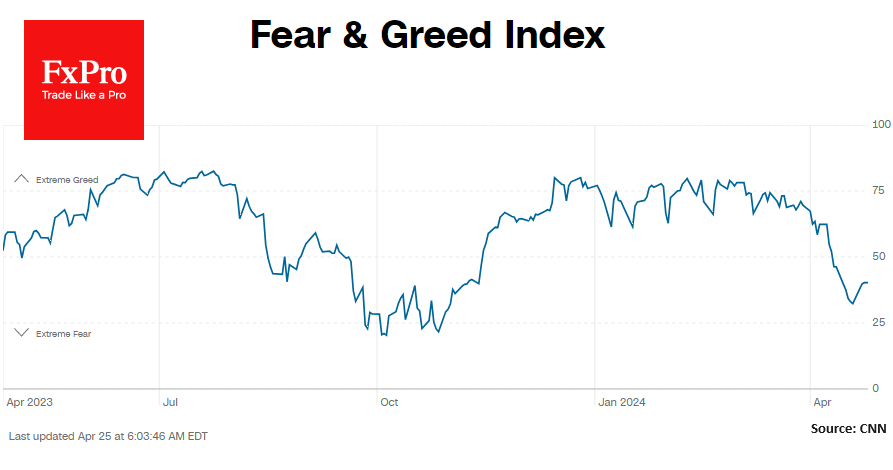New correction horizon for US markets
May 02, 2022 @ 10:43 +03:00
The US S&P500 closed Friday down 3.6%, while the Nasdaq lost as much as 4.2%, the sharpest one-day decline since June 2020.
The decline was triggered by the market reaction to the disappointing reports of tech giants Amazon and Apple, which in previous quarters acted as a driver of optimism, but ended Friday down 14% and 3.7%, respectively.
While on Wednesday and Thursday, we saw that individual high-profile disappointments in the reports did not interfere with the positive dynamics of indices, Friday’s dip suggests that investors’ worries are reaching a new level.
The S&P500 closed last week at its lowest level since May 2021 last year. The index was in an area where it has found itself repeatedly since February but invariably received support from buyers.
This time the situation looks more worrying, as the week and month closed near the day’s lows. Once again, it looks as if the market has come to the edge of the cliff and now has a good chance of going down.
Technical analysis indicates that the S&P500 correction is crossing a level with a deeper target. From February to the end of April, the index several times supported the dip to 76.4% of the pandemic rally from March 2020 lows to January 2022 highs. A close S&P500 below 4200 indicates a move into a deeper correction horizon, up to 61.8% of the post-pandemic rally, near 3800.
On the side of the bears this time around, is the actions of the FOMC this week, from which investors expect a 50-point rate hike and the launch of a quantitative tightening programme (asset sales with a balance sheet of 95 billion a month). Moreover, investors anticipate that the Fed will warn that it can raise the rate by 50 points (double standard rate hike) in the next few meetings.
Right now, perhaps only the FOMC can bring optimism back to the markets by keeping them from a poorly controlled collapse. However, the big question is whether this is part of the current agenda of the regulator, which has to respond to the highest inflation rate in more than 40 years paired with a tight labour market.
The FxPro Analyst Team







